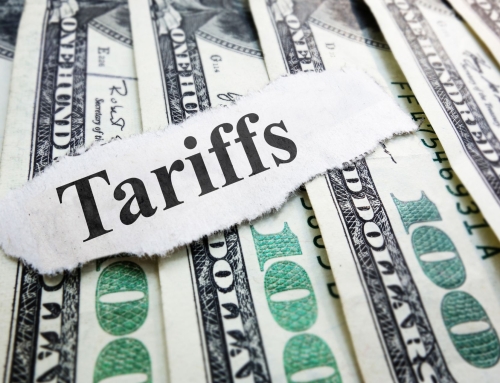How to Calculate Your Duty Drawback Potential
Duty drawback can provide a significant financial benefit for businesses involved in international trade. If you’re unfamiliar with the term, duty drawback refers to the refund of customs tariffs paid on imported goods that are later exported in the same or altered condition. For companies managing high import and export volumes, the potential savings can be immense—but only when calculated correctly.
This step-by-step guide will walk you through the process of assessing your duty drawback potential, taking into account critical factors such as your import/export volume, product categories, and manufacturing processes. By the time you finish reading, you’ll have a clear understanding of how to estimate your refund potential and maximize savings for your business.
What Is Duty Drawback and Why Is It Important?
Before crunching the numbers, it’s helpful to understand the purpose of duty drawback. Simply put, it is a U.S. Customs and Border Protection program designed to eliminate or reduce the cost impact of tariffs on exported goods, encouraging participation in global trade. Refundable duties can include tariffs on raw materials, components, or finished goods imported into the U.S. but later exported.
For businesses dealing with significant import and export activities, unclaimed duty drawback is essentially money left on the table. Correctly calculating your duty drawback potential provides an accurate snapshot of the refunds your company might be entitled to, helping you align your financial planning and maximize efficiency.
5 Factors to Consider in Calculating Duty Drawback Potential
Accurately gauging your refund potential requires an in-depth understanding of your company’s processes and supply chain. Below are the five major factors to consider.
1. Import/Export Volume and Duty Spend by HTSUS
The Harmonized Tariff Schedule of the United States (HTSUS) categorizes all imported and exported goods with specific codes, each subject to a particular duty rate. By analyzing your import/export volume and the associated duty spend for goods classified by their HTSUS codes, you can begin identifying which products might qualify for drawback refunds.
For example, if your company imports machinery parts and exports final equipment, tracking the associated duty rates and quantities involved is essential to estimating your potential refund.
2. Applicable Product Categories and Inventory Lifecycle
Duty drawback eligibility depends on the movement and lifecycle of your inventory. Are the imported goods being exported directly in their original condition (unused merchandise drawback), or are they incorporated into finished products (manufacturing drawback)?
Understanding how and where your products are categorized will ensure you’re applying for the appropriate type of drawback. Maintaining detailed records of inventory transitions is crucial in this process.
3. U.S.-Based Manufacturing Processes
If your company engages in U.S.-based manufacturing, the components imported and used to create the final goods impact your duty drawback calculations. For manufactured products, you’ll need to analyze the components making up the finished goods and the percentage of those components that qualify for drawback.
4. Export Destination
Export destination matters because certain trade agreements and bilateral relationships influence duty drawback eligibility. For example, exports to countries with Free Trade Agreements (FTAs) may have particular rules limiting refunds for specific goods, such as the U.S.-Chile Free Trade Agreement. The Chile FTA Drawback and Duty Deferral Program sets a limit to the refund of duties on materials used in producing goods that are later exported to Chile.
5. Use of Third-Party Entities in the Supply Chain Process
Does your company engage with third-party entities, such as distributors or logistics providers, in your supply chain? If so, these collaborations may impact your eligibility for drawback or how you must document the process. Keep in mind that regulatory compliance becomes more complex in these cases.
Quick Methods to Estimate Your Duty Drawback Potential
While accurately determining your drawback potential takes in-depth analysis, there are simple formulas you can use to generate an estimate. Below are three quick calculation methods suited to various scenarios:
Method 1: Based on Imported Merchandise
Formula:
Annual duty paid on imports * % of merchandise exported * 99% = Duty Drawback Potential
For example, if your company pays $500,000 in tariff duties annually, and 40% of those goods are exported, your potential refund would be approximately $198,000 ($500,000 * 0.40 * 0.99).
Method 2: Based on Export Volume
Formula:
Value of exported merchandise * duty rate on imported merchandise * 99% = Duty Drawback Potential
For instance, if $1,000,000 worth of exported merchandise is subject to a duty rate of 5%, your potential refund equals $49,500 ($1,000,000 * 0.05 * 0.99).
Method 3: For Manufacturing Drawback
Formula:
Annual duty paid on components * % of components in exported articles * 99% = Duty Drawback Potential
If you paid $400,000 in duties on imported manufacturing components and 60% of those components are used in exported products, your estimated drawback potential is $237,600 ($400,000 * 0.60 * 0.99).
Partner with Comstock for Accurate and Reliable Duty Drawback Support
For over 165 years, Comstock has been a trusted partner to businesses looking to recover tariffs and optimize their customs processes. Our expert customs brokerage services include analyzing your business’s unique drawback opportunities, preparing all required documentation, and filing claims with precision to ensure compliance.
Whether you’re dealing with unused merchandise, manufacturing drawback, or rejected merchandise drawback, we tailor our services to your needs, helping you maximize refund potential and simplify the process. Contact us today!






